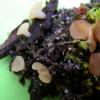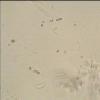
09-01-2026 17:41
Arnold BüschlenHallo, F. dilatata wird von vielen Bryoparasiten

10-01-2026 20:00
Tom SchrierHi all,We found picnidia on Protoparmeliopsis mur

07-01-2026 22:22
 Danny Newman
Danny Newman
Tatraea sp. on indet. hardwood The Swag, Great Sm

10-01-2026 01:18
 Danny Newman
Danny Newman
cf. Neovaginatispora fuckelii on indet. shrub Pre

07-01-2026 10:24
 Danny Newman
Danny Newman
Pezicula sp. on indet. hardwood Appalachian Highl

09-01-2026 10:08
 Blasco Rafael
Blasco Rafael
Hola, en el mismo habitat que la anteriorRetamaDia

08-01-2026 21:22
 Blasco Rafael
Blasco Rafael
Hola, He recogido esta muestra de Orbilia sobre Re

07-01-2026 17:29
 Marc Detollenaere
Marc Detollenaere
Dear Forum,On a barkless Populus I found some smal

10-11-2021 17:33
 Riet van Oosten
Riet van Oosten
Add-on topic http://www.ascofrance.com/forum/7059

07-01-2026 10:05
 Danny Newman
Danny Newman
cf. Chaetospermum on XylariaCosby Campground, Grea
Petit discomycète stipité
Alain BRISSARD,
27-03-2009 18:53
Ma documentation limitée m'amène à demander votre aide précieuse.Peut-être est-il question d'un Hymenoscyphus ?
Les ascomes de cette espèce ont été trouvés dans un endroit humide à même le sol sur débris ligneux pourissant (Salix ??) Taille 2 à 3 mm, couleur ocre très pâle à ocre-brun -rougeâtre.
Les asques sont cylindriques-claviformes, faiblement IKI+ au sommet de l'asque, octosporés ( à spores irrégulièrement uni- ou bisériées) (75 - 90 x 5,5 - 8 µm)
Les spores courtement et étroitement cylindriques aux extrémités arrondies((7-11 x 2-3 µm)
Richard Korf,
27-03-2009 21:37
Re:Petit discomycète stipité
My guess is that it is more likely a member of the Rutstroemiaceae, since few Hymenoscyphus spp. turn that dark brown. Also dark base of stipe sugests this may be arising from a stroma. Sections would help, especially if you can include some of substrate in section. Moellerodiscus a possible guess.
Dick
Dick
Hans-Otto Baral,
27-03-2009 21:43

Re:Petit discomycète stipité
Dear Alain & Dick
A photo of the ascus apex in IKI would also help in deciding the family. The contents of the living paraphyses would be of great help as well.
My guess is Hymenoscyphus vernus, and the brown colour to originate from oxidation of the VB-guttules in the paraphyses.
Zotto
A photo of the ascus apex in IKI would also help in deciding the family. The contents of the living paraphyses would be of great help as well.
My guess is Hymenoscyphus vernus, and the brown colour to originate from oxidation of the VB-guttules in the paraphyses.
Zotto
NC NC,
27-03-2009 23:24
Re:Petit discomycète stipité
Hello Dick and Zotto
Thank you very much for your answer. I think as Zotto,it is likely Hymenoscyphus vernus.
But what mean "VB"-guttules ? ( Was bedeudet VB ? )
After observation at the Magnifying-glass 3/4 of the stipe is clearly black as the description.
I know not good the genus Moellerodiscus (=Ciboriopsis), but the size or the ecology agree not.
Friendly
Alain
Thank you very much for your answer. I think as Zotto,it is likely Hymenoscyphus vernus.
But what mean "VB"-guttules ? ( Was bedeudet VB ? )
After observation at the Magnifying-glass 3/4 of the stipe is clearly black as the description.
I know not good the genus Moellerodiscus (=Ciboriopsis), but the size or the ecology agree not.
Friendly
Alain
Alain BRISSARD,
27-03-2009 23:57
Re:Petit discomycète stipité
Hello Dick & Zotto
Thank you very much for your answer.
I think as Zotto,it is likely Hymenoscyphus vernus. But what mean "VB"-guttules (Was bedeutet VB ?)
After observation at the Magnifying-glass the 3/4 of the stipe is clearly black as the description.
I know not good the genus Moellerodiscus ( Ciboriopsis) but the size or the ecology agree not.
Friendly
Alain
Thank you very much for your answer.
I think as Zotto,it is likely Hymenoscyphus vernus. But what mean "VB"-guttules (Was bedeutet VB ?)
After observation at the Magnifying-glass the 3/4 of the stipe is clearly black as the description.
I know not good the genus Moellerodiscus ( Ciboriopsis) but the size or the ecology agree not.
Friendly
Alain
Hans-Otto Baral,
28-03-2009 11:03
Alain BRISSARD,
28-03-2009 13:37
Re:Petit discomycète stipité
Thank you very much Zotto for your speaking image.
Now I think is well H.vernus.
Best regard
Alain
Now I think is well H.vernus.
Best regard
Alain
NC NC,
29-03-2009 16:59
Re:Petit discomycète stipité
Bonjour à tous,
L'espèce semble rare (?), même dans les humides Ardennes!
Trouvée deux fois : le 20/03/2002 et le 10/092005 (ce ne serait pas toujours une espèce "vernale"?
Voir fiche ASCOfrance
asq 75 X5,5 µm sans crochet
spores 11-13,5 X 3-3,5 µm contenu lipidique 1-2
Amitiés
Robert
L'espèce semble rare (?), même dans les humides Ardennes!
Trouvée deux fois : le 20/03/2002 et le 10/092005 (ce ne serait pas toujours une espèce "vernale"?
Voir fiche ASCOfrance
asq 75 X5,5 µm sans crochet
spores 11-13,5 X 3-3,5 µm contenu lipidique 1-2
Amitiés
Robert
Alain BRISSARD,
29-03-2009 18:43
Re:Petit discomycète stipité
Merci Robert pour les précisions apportées.J'avais également consulté la fiche sur ascofrance afin de renforcer mon opinion.Les tailles peuvent légèrement différer suivant qu'on monte dans de l'eau ou dans du Melzer comme je l'avais fait en premier lieu. J'ai ainsi mesuré des asques dans la fourchette de 75-90 x 5 - 8 µm.
Zotto encore merci, j'ai eu l'occasion en montant dans de l'eau d'observer les fameux corps vacuolaires réfringents au sein des paraphyses ce qui semble être un caractère déterminant de plus.
A+
Alain
Zotto encore merci, j'ai eu l'occasion en montant dans de l'eau d'observer les fameux corps vacuolaires réfringents au sein des paraphyses ce qui semble être un caractère déterminant de plus.
A+
Alain

 7239.jpg
7239.jpg
